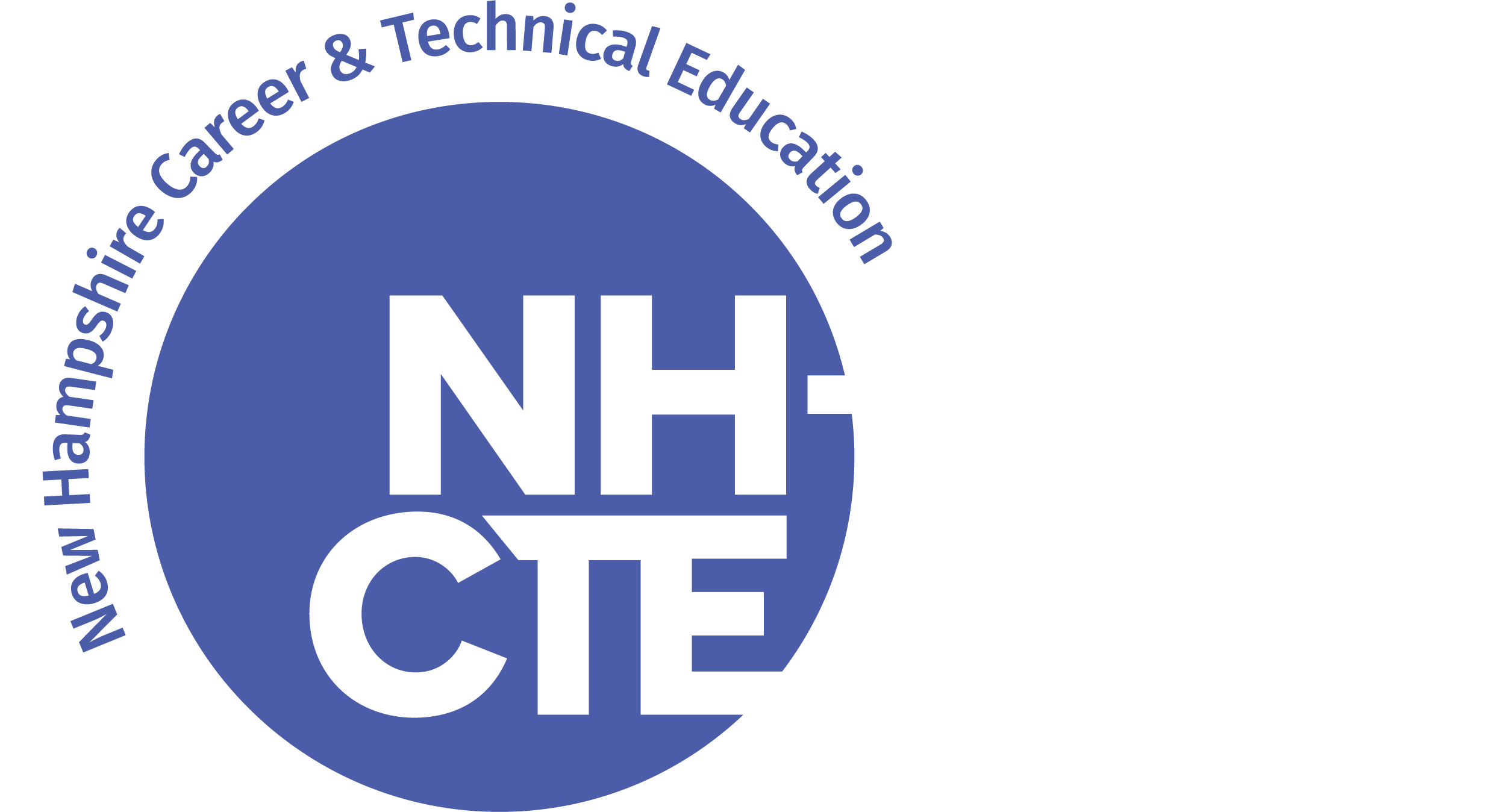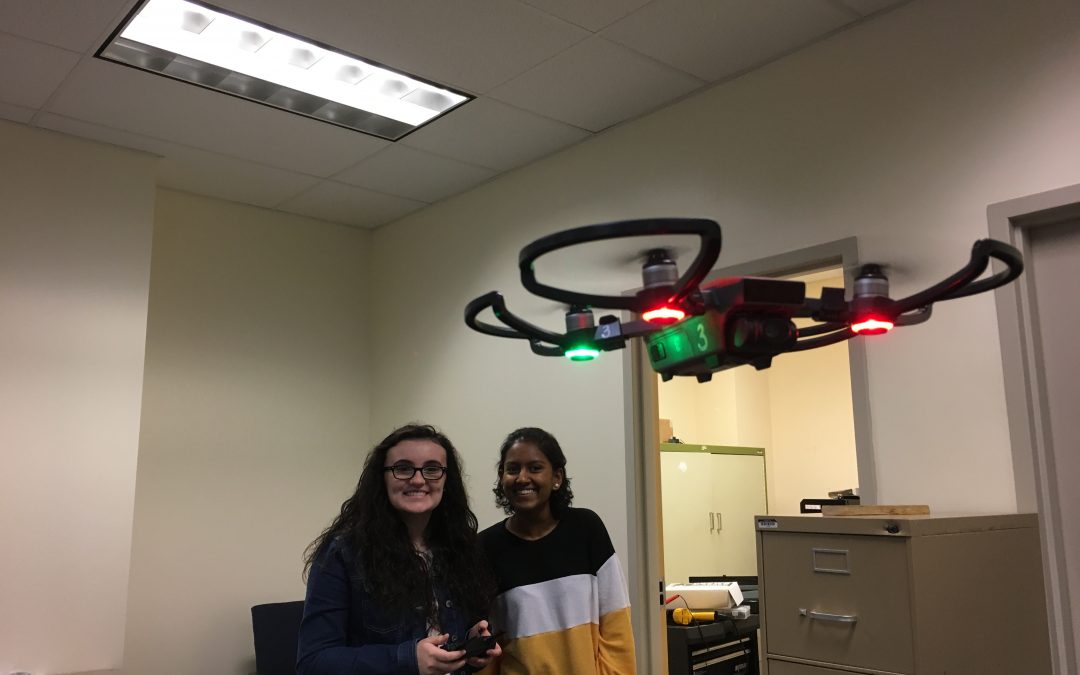
Jan 16, 2019 | Article
“Flexing” time in school
The introduction of technology is not the only change in today’s classroom, as many students struggle with availability of time, which is an issue that resulted in the Flexible Time Model (FTM).
FTM is a school structure that provides a set amount of time each school day during which students have control over where they go and what they do. The amount of time can vary, but typically ranges from 30 to 60 minutes.
The idea for the model began in 2010 when Brian Pickering, former Principal at ConVal Regional High School, found himself unable to provide additional academic help for a student involved in numerous after school activities. The student was at a loss for how to get the help she needed because her teacher could not come before school, the student could not meet after school, and they did not have a shared lunch.
“She wasn’t alone,” said Pickering. “Students at ConVal were having trouble finding time for enrichment activities, extensions, mentoring, RTI, and social emotional supports.
Looking for a solution, Pickering employed a team of teachers, staff, and students to brainstorm. What they came up with would face some stumbling blocks, and go through a few iterations, but ultimately became what is recognized today as the flexible block, which is now used across the state.
How does FTM work?
During “flexible time,” attendance is taken, and students are required to actively work, although Amanda Bastoni, Director, Nashua Technology Center North, said students “have choices over what they work on and where they work.”
“This autonomy gives students control and choice,” she said. “For example, students who are doing well in school can choose to participate in enrichment activities, others can choose to get extra help, and students who need social or emotional assistance can choose to participate in counseling.”
At ConVal, which is a typical example of FTM across the state, 43 minutes is set aside for “flexible time.” Each Monday, a homeroom mentor works with a set cohort of students to schedule where they would like to work for the upcoming week.This mentor will work with these students for four years.
“Students can also adjust their schedules as needed during the week, but having a weekly meeting allows the teacher to monitor grades and advise students,” said Pickering. “Teachers still have a scheduled prep-time and they are not expected to create lesson plans for the flexible block.”
As a teacher at ConVal before going to Nashua Technology Center North, Bastoni said she used flex time to develop relationships with students and scaffold learning by offering them opportunities to explore creative “deep dive projects.”
“I also used the time to re-teach concepts, give missed assessments, and run both Yearbook and Newspaper clubs,” she said. “At ConVal, the newspaper club was run in conjunction with the editor of the local paper who would not have been able to participate if the club had been run after school. Because it was run during the Flex Time in the school day, he could participate.”
At Nashua High School, Bastoni said she has continued to work creatively with flex time, as she wrote a successful grant that allows the center to pilot a “Girls in STEAM” course.
“It is designed to introduce girls to STEAM and drones and will transition next year into the first Drone Course taught during the school day at any high school in New Hampshire,” she said. “Students in this course and the clubs I ran at ConVal all had the opportunity to participate in the activities as ELO’s, too, which meant they could earn credit during this time.”
Aside from the flexibility it provides both teachers and students, FTM reflects best practices when it comes to learning.
“It gives students choice,” said Bastoni, and research tells us that students do better when they have control over their lives, how they spend their time, and what they work on. The current school model has no room for choice…Choice is positively associated with better performance on tests, more engaged students, more creative solutions, and less disciplinary activities.”
To learn more about the FTM, Bastoni will present at the 2019 Personalized Learning Summit. Click HERE to learn more.
This is the first of a two-part series on the Flex Time Model (FTM) where we look at its beginning in NH and rationale behind it before discussing broader implications in part two.

Dec 7, 2018 | Challenges and Opportunities, Industry
One of the biggest challenges in industry today in New Hampshire is the workforce labor shortage, a reality that serves as backdrop to a new construction career exploration program at Parkside Middle School in Manchester.
According to Jennifer Landon of Associated Builders and Contractors of New Hampshire/Vermont (ABC NH/VT), the program is unique in that it provides an educational curriculum with significant input from industry.
“Our role was to bring industry partners to the table to not only discuss what they wanted to see taught, but to be involved in the classroom and supplement the learning experience,” she said. “We’ve also reached out to suppliers to help supplement initial materials costs.”
She said ABC’s involvement stems from a call they received last year from Procon’s Jimmy Lehoux, who at the time was pushing for election to the Manchester Board of School Committee. His message during his election campaign, which he won, included a desire to bring the trades back into the schools.
“Since the 90s, trades have been slowly disappearing from our schools, and now the industry is paying the price,” he said.
This price, he noted, is an industry struggling to find workers.
“Today’s average age of a trades person is around age 53, which means that in 10 years there will be a major gap in skilled labor,” he said. “We need to help students identify the opportunities that exist in this field and also recognize that they can have an extremely successful career.”
In helping build the program with educators at the school, district officials, industry partners, ABC and others, Lehoux said they are taking a very necessary first step to addressing this need in the construction industry. As for how it works, he said the program takes the traditional wood-shop class and breaks it into mini-segments on the trades.
“Every two to three weeks the trades change to give the students an overview of different disciplines in construction,” he explained. “After each segment, an industry professional comes in and speaks with the students on subject matter, such as architecture, safety, framing, drywall, electrical, plumbing, HVAC and masonry.”
Landon said the program is also flexible enough to welcome industry partners in related sectors.
“We can expose them to many different career fields in the industry and how everything works together,” she said. “We need to build a pipeline into CTE, so having industry partners is what makes this program so unique and important. We need industry partners talking about their trades, their career paths, and the quality of life this industry offers to engage younger students. We need to expand the IBuildNH brand.”
According to Lehoux, the program is also important in that it dispels pervasive myths about construction careers, which he said many people mistakenly think are meant for those not interested in college.
“Technology has taken the lead in how we construct commercial buildings as well as residential homes,” he said.
While currently at Parkside Middle School, the program may serve as a template that could be replicated at the other three middle schools in Manchester in 2019.
“They all want in,” said Landon, who noted they are to all meet as a group in mid-December to discuss replicating the program.
The strength of this program, she said, is not just its content.
“This type of program, regardless of content, allows students to make better informed decisions about their career options,” she said. “There are several challenges we face in career planning. How do we shift the paradigm with the adult influencers? How do we embrace career exploration? What can we do to keep our youth in New Hampshire to contribute to our local economy?”
The answer is complicated, but she said industry input will continue to be essential.
“Through the Sector Partner Initiative, we are hoping programs like the one we are piloting at Parkside will help address the critical labor shortage,” she added. “The program reflects a model built around industry/education partnerships. We would like to see industry partners essentially adopt a school and have it built into their business model–everyone will benefit from such a model.”
To learn more about the construction career exploration program, or related ABC NH/VT and Sector Partner Initiative (SPI) initiatives, visit www.abcnhvt.org and https://nhsectorpartners.org/industries/construction/.

Nov 19, 2018 | Impact, Leadership
Recently, Steve Rothenberg, NHCTA/NH-CTE President, joined a diverse group of leaders from across the nation in California to discuss ways to better advance the skilled trades in the automotive, construction, manufacturing, welding and HVAC sectors.
The trip was sponsored by Harbor Freight Tools for Schools, whose guiding principle is grounded in a deep respect for the skilled trades and desire to create real opportunity for kids who love to build, fix and create. Harbor Freight Tools for Schools is a philanthropic programs of The Smidt Foundation, founded by Eric Smidt, owner of Harbor Freight Tools.
“Harbor Freight Tools for Schools brought us in to advise them on their funding priorities,” said Rothenberg.
Noting there were some “highlight influential people” in attendance, including several state commissioners of education, United Way worldwide executives, LA public transportation system architects, CTE professionals and others, Rothenberg expressed enthusiasm for their collective recommendations.
“The group felt that a pipeline for skilled trade teachers and overcoming the ‘stigma’ of the trades are the two top issues for the foundation to address moving forward,” he said. “It was a very well organized event, and I was pleased to be able to represent the interests of NH and CTE.”
In addition to receiving recommendations from the group regarding funding priorities, Harbor Freight Tools for Schools sought advice on the merits behind getting involved in policy work at the federal, state, local and/or grassroots levels.
According to Rothenberg, Harbor Freight Tools for Schools has already become deeply involved in CTE, as he noted their first foray in this arena was last year.
“They awarded $500,000 worth of prize money to ten top CTE trade teachers in 2017,” he said. “Teachers actually received $10 to $30K directly, while their programs got the rest. This year, the total was raised to $1 million…The application process has some interesting reflective elements that I think could be used for professional development.”
In reflecting on his experience at the national conference, Rothenberg said he cannot help but look ahead at other issues that could be pursued by NH-CTE. These issues, he said, cover broad areas, some of which include:
How to
- Overcome some age limits for trade-based pre-apprenticeships.
- Connect employment security, postsecondary and secondary databases to test the impact of interventions/learning, such as CTE completion.
- Establish career-related competencies for school counselors.
- Establish career credential recognition model for high school graduates.
- Create CTE teacher-leader pipelines to enhance succession planning.
- Refine and further establish ESSA career-related metrics.
- Establish statewide WBL models.
- Advocate for years of service credit for industry experience on the teacher scale for new CTE teachers.
“There is a lot for us to think about in NH and nationwide when it comes to CTE,” he added. “The conference got me thinking about an even bigger picture and the possibilities that could exist through Harbor Freight Tools for Schools.”
To learn more about Harbor Freight Tools for Schools, visit https://harborfreighttoolsforschools.org.
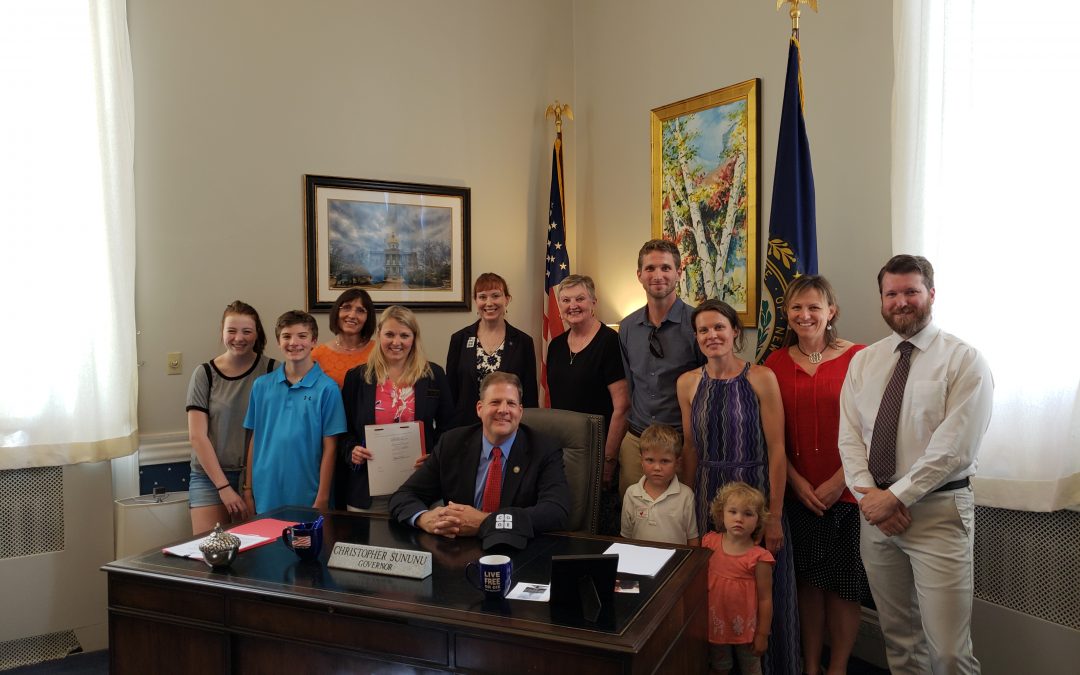
Nov 8, 2018 | College, Impact, Industry, Programs
With the majority of STEM jobs in computing and a projected job growth of 13% compared with 6.5% growth across all occupations, the need for computer science education has never been greater.
It is this need that in part led Creative Computing Challenge (CCC), a five-year program funded by the National Science Foundation, to establish CS4NH. A working group of business/industry, non-profits, and K-12/higher education members collaborating to bring computer science to all New Hampshire K-12 students, CS4NH is working to increase access to and participation in Computer Science educational opportunities.
CS4NH’s Terry Wolf, a NH state legislative representative and vice chair of the House Education Committee, cited “a huge shift” in the public’s understanding of the need for computer science education.
“Not too long ago, people thought Computer Science only needed to be offered at the high school level as an elective,” she explained. “Today, people want kids to be more than consumers of technology. They want them to be the creators, innovators and problem solvers.”
She said this shift in understanding, furthered by advocacy efforts by CS4NH, led to the passage of NH House Bill 1674 earlier this year, which made Computer Science as a core K-12 subject area.
“After listening to a wide variety of stakeholders, adding Computer Science to the definition of an adequate education matched what people are looking for,” she said. “The bill passed with wide bipartisan support in the legislature.”
CS4NH’s Beth Doiron, Director of College Access and DOE programs and initiatives at the community college system of NH, said skills learned in computer science courses help students build basic problem-solving skills.
“Computer science instruction helps students understand how to accomplish tasks more efficiently and help them be better prepared for college in general, regardless of their career or program major choice,” she said.
CS4NH has forged several strategic partnerships, including one with the New Hampshire Tech Alliance, which Executive Director Matt Cookson said makes sense for them in several ways.
“CS4NH goals align perfectly with the goals of our Workforce Development committee and mission of the organization,” he said. “Being able to house the efforts of CS4NH and support its growth and implementation was a logical step as we look to encourage more young people to learn about Computer Science in New Hampshire.”
Judith Burrows, Director of Student Aid at the New Hampshire Charitable Foundation, another CS4NH collaborator, said her biggest takeaway from computer science is the thought processes such a curriculum seeks to encourage.
“Computational thinking is much more than just programming or IT,” she said. “It is foundational for all businesses. It really is the currency that businesses are looking for regardless of the field.”
Citing computational thinking as “the backbone” of various forms of technology, Lori Langlois, Director, North Country Education Services, said Computer Science addresses current and future needs.
“Given the known workforce shortages in NH in computer programming, web development, and other skilled computing fields, CS4NH has an important role in advocating to increase access and participation in CS to foster these career paths for students,” she said.
Langlois said CS4NH is particularly important in her region.
“For the North Country, computer science holds the potential for developing an
innovation economy,” she said. “In order to attract new or expanding businesses, northern NH schools are focusing on computer science with the intention of making visible, the young, energetic, and talented individuals we are developing for a STEM-skilled employee pipeline.”
To learn more about CS4NH, or any related initiative, visit cs4nh.org.
This is the final story of a multi-part series on CCC and the relevance of computational thinking in the classroom and industry in NH.

Oct 24, 2018 | Industry
Non-profit New Hampshire Lodging & Restaurant Association (NHLRA) is often involved in CTE events and initiatives, which reflects its mission “to promote, advocate, educate, and inform the hospitality and tourism industry in New Hampshire.”
One way NHLRA achieves its mission is through the Sector Partnership Initiative (SPI), a grant funded, industry led collaboration that addresses current workforce needs in five key sectors across New Hampshire.
The hospitality industry is one of these sectors.
“My role is to look to make connections between industry, funding resources, and education,” said NHLRA’s Amie Pariseau, who serves as Sector Partnership Advisor. “With workforce shortage a challenge, employers need someone to break down barriers, find solutions, and create a network to assist in those challenges.”
Building off this initiative, Pariseau said she is also involved in Girl Incorporated and Girl Scouts, which she said educates younger students on the nature of hospitality and available employment opportunities.
“We want to boost their interest in the industry and have them think outside the box,” she said. “For example, students think of a chef when it comes to a restaurant, but what other skills and jobs might be available there?
Held on October 15, ProStart Boot Camp is another hospitality initiative in which NHLRA is involved. It was the first of its kind in New Hampshire. ProStart is a nationwide, two year program for high school students developed by the National Restaurant Association. Eleven Career and Technical Education (CTE) centers actively teach the industry-driven curriculum, which “provides real-world educational opportunities and builds culinary techniques, practical management skills and a foundation that will last a lifetime.”
“With thirteen industry members ranging from ACF certified chefs to a director of lodging operations, seven schools, ten teachers, and forty students in attendance, it was a great day for collaboration between education and industry,” she said.
NHLRA also works with The Extended Learning Opportunities Network, which Pariseau describes as “a great group of educators dedicated to providing their students opportunities to demonstrate competencies outside the traditional classroom setting such as project based learning with a mentor, job shadowing, or internships.”
“In conjunction with two properties, I’ll be hosting the ELO Coordinators to give them behind the scenes look at the hospitality industry, talk about career pathways, and hopefully have a student story,” she added.
In April, the NHLRA will spearhead the second New Hampshire Hospitality Month. In addition to organizing tours throughout the hospitality industry for schools and community groups, Pariseau said they hope to ramp up with community college involvement, Chef to School nights, and more for 2019.
According to her, constant involvement in CTE related events and initiatives is critical to NHLRA’s mission, which also includes strengthening relationships with NH’s education system at the secondary and post-secondary level.
“CTE offers students practical classroom learning as well as hands-on experience preferably in an industry setting,” she said. “They’re able to try out a career in high school. “The opportunity to have a look into the ‘real world’ is so beneficial to them as they begin to formulate their future goals.”
In building relationships with schools and industry, Pariseau said NHLRA helps augment existing career pathways and build new ones.
“We want to connect student to our industry members and provide them with mentors, too,” she said. “We strive to get students out of the classroom and industry into the classroom.”
To learn more about NHLRA, visit https://www.nhlra.com.

Oct 22, 2018 | Article
On October 9, the New Hampshire Joint Engineering Societies (NHJES) held its 12th Annual Conference, which featured subject matter experts on topics like Artificial Intelligence, ReVision Energy, Climate Adaptation in Dover Master Plan and more.
For the second year in a row, the conference also included secondary teachers and students, the latter of whom displayed their own projects and presentations.
“This platform has became an outlet for students to experience learning outside of the classroom,” said NHEJS Board Member Frank Xydias of the Milford High School & Applied Technology Center. “It also gives students the chance to work alongside of engineers and meet engineers that can become a positive influence in their career development.”
Members in NHEJS include the New Hampshire Society of Professional Engineers, American Council of Engineering Companies, American Society of Civil Engineers – NH Section, IEEE – New Hampshire Section, Society of Women Engineers, Southern New Hampshire, Structural Engineers of New Hampshire.
In hosting the conference and inviting students and teachers, Xydias said they take a meaningful step toward achieving their mission “to provide education, leadership, and support for the profession of engineering across all disciplines of practice.”
As far what he hopes the public can better understand about engineering, Xydias cited its ubiquitous nature.
“There are over 40 type of engineering degrees and a multitude of subcategory professions,” he said. “An engineering career can lead to many other professions.”
He also noted that engineering need not be viewed as an onerous subject, either. At its core, he said, engineering is about people who like to problem solve.
“As young children, we are trained to become engineers,” he said.
He cited various toys as examples in which children learn to become engineers. These examples included Play-Doh, toy models, LEGOs, checkers, chess, and other games.
Play-Doh, for example, uses manufacturing engineering.
“It uses vocabulary and actions of injection molding like ‘extrude, form, press, fit, mold, gate, sprue’ and similar terms,” he said. “As an educator of engineering, I bring back wonderful childhood memories of building LEGOs, using play-doh, or playing checkers back into the classroom. These recollections can be a powerful way to make connections for students that keep them engaged and learning.”
As for the subjects discussed at this year’s conference, Xydias said the experts provided deeper insight into each one. Jim Issaak of IEEE, for instance, talked about recent developments in Artificial Intelligence and its emerging role in our professional and personal lives.
Frank Edelblut, commissioner of the NH Department of Education, presented “The Role of Education in the Tech Era.”
“It was a great conference that helps set the stage for what’s next in engineering,” said Xydias.
As for what is next, Xydias acknowledged he is not sure, which he said makes the engineering field so interesting.
“Kids in kindergarten this year graduate in 2031,” he said. “The careers that students will be going into have not yet been developed, and STEAM and engineering careers are the foundation of these changing careers…We might find ourselves in scenes from Star Trek, 3d printing our food, flying to the store, or working with some other futuristic AI.”
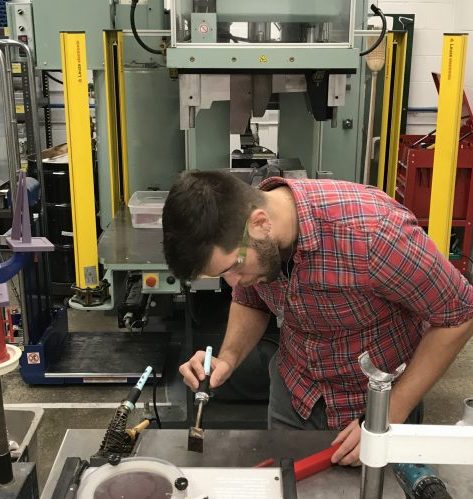
Oct 8, 2018 | Article
An entire month of celebrating manufacturing in New Hampshire!
For the last 5 years, New Hampshire Manufacturing Extension Partnership with help from the New Hampshire Department of Business and Economic Affairs, the Business and Industry Association, the New Hampshire High Tech Council, the Community College System of New Hampshire, the New Hampshire Department of Education and many other partners have organized Manufacturing Month.
What is it all about?
Throughout the month of October, high school and middle school students will be going on field trips to visit local manufacturers. During those trips, manufacturers will have the opportunity to show students how cool manufacturing is and inform them of all the in-demand careers their field has to offer. Students will have the chance to interact with employees and get an up-close look at the ins and outs of manufacturing in New Hampshire. For manufacturers, it opens up a new supply of talent to help them build the future skilled manufacturing workforce.
NH CTE’s and community colleges will also schedule open houses in the month of October for students and members of the community. The schools will have the opportunity to show off their advanced manufacturing programs, facilities, and machines. Potential students will learn about all of the educational options in advanced manufacturing and will leave convinced that staying local and building a future here in New Hampshire is the best career move for them.
What did the students say?
Students had this to say about their visits to manufacturers:
- Very interesting to see how the facilities worked and how the machines all worked together to make the product.
- The field trip was highly informative and interesting. It gave me a broad variety of different things
manufactured right in our local area.
- The field trip was really great! I learned a lot and can honestly say it’s one of the best field trips that I’ve been on with the school.
- It was eye-opening in the sense that I could be doing something like this in the future.
To participate: Contact, Jill Duddy at (603) 226-3200 or jilliand@nhmep.org
Schools – Click Here Manufacturers – Click Here
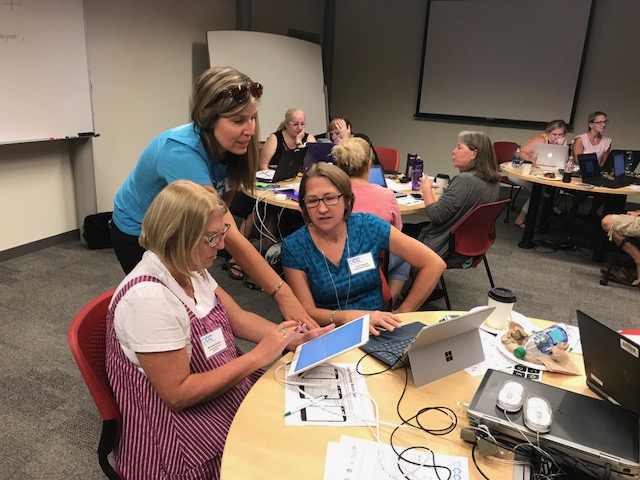
Sep 25, 2018 | Article
While technology is often seen as an educational end, one objective behind the Creative Computing Challenge (CCC), a five-year program funded by the National Science Foundation, is to highlight its use as a teaching tool.
This objective was met earlier this year on two occasions at Salem High School Career and Technical Center in which teachers from multiple CTE centers convened to discuss Thunkable. An online platform that allows users to build a mobile app for either Android or iOS devices, Thunkable was used by many students in computer science classes this past spring.
According to Heather Drolet, a technology integrator at Christa McAuliffe School in Concord, these teacher workshops provided a unique learning opportunity for teachers.
“Many of the teachers had experience already with MIT App Inventor 2, a program that actually inspired Thunkable, but can only be used to build Android apps,” said Drolet, who facilitated a Thunkable workshop in July.
Selected by the New Hampshire Charitable Foundation as 2017-2018 recipient of the Christa McAuliff Sabbatical, Drolet spent the past year working with many 5th grade classes and teachers around NH.
“Because they had already implemented App Inventor with their students and loved it, they were looking for a way to incorporate iOS app development because of the high percentage of their students with iPhones,” she added.
She said these workshops provided a forum for teachers to discuss and compare the two programs. She said what resulted was excitement at the prospect of having a new tool in their toolboxes that they could use to bring “real-world, authentic learning experiences to their students.”
“They asked a lot of practical questions as we built sample apps in Thunkable,” she said. “We also had a robust discussion on strategies for implementation of the tool.”
According to Drolet, teaching app development is not just a great way to introduce students to the field of computer science, it makes learning come alive for students.
“We all live in a connected world, and classrooms are no longer confined to four walls,” she said.
As an example, she said a student could build an app that allows users to find and donate to local food pantries.
“This not only gives the students a new skill in app development and a hands-on learning experience–math, social science, and business/marketing standards–it builds relationships with the local community,” she said. “Lending purpose to schoolwork is quite engaging for students. It draws in our reluctant and disengaged students and quite often levels the playing field.”
Inclusion is another benefit from this use of technology.
“Populations that are traditionally underrepresented in the field of computer science–females and minorities, for instance–are given an equitable learning experience that amplifies the positives of human interaction with technology,” she said.
According to Chris Dodge, director of Salem High School Career and Technical Center, the workshops help to underscore changes in computer science in recent years. In particular, he cited numerous changes at their school.
“Students are now getting exposure to computer programming as early as first grade and units in computer science are now integrated in grades 1-8 within the Salem School District,” he said. “We have advanced our thinking, approach and commitment to a K-12 STEM curriculum in just 3 short years.”
This commitment resulted in part from him taking a closer look at the programming they previously offered in a concerted effort to “up their game.”
“[We want] students that will be entering our programs to have a more developed skill set in the areas of engineering and computer science,” he said. “The adoption of this K-12 curriculum is a natural fit for teaching the next generation science standards and enhancing our elementary science curriculum.”
At the heart of these changes and enhancements is computational thinking, which Dodge said is not unlike the scientific method or engineering process.
“It is using and applying logical thought to identify and systematically solve a problem,” he said. “This process involves identifying a problem to solve, developing a solution through the use of algorithms, logical process and trial and error, and ultimately applying the solution on a broader scale.”
He said the value in nurturing computational thought cannot be over-emphasized.
“It moves students beyond the rote and mundane and challenges them to struggle with the challenge of problem solving and real-world application.”
This work is supported by grant #IIA-1348352 from the National Science Foundation.
This is the third of a multi-part series on CCC and the relevance of computational thinking in the classroom and industry in NH.

Sep 24, 2018 | Article
On September 12, Frank Xydias, high school engineering teacher at Milford High School, received the iRobot -STEM -MVP teacher of the year award at Fenway Park, an experience he described as “heartwarming.”
“I stood on the field with my peers for a good part of an hour,” he said. “We were all in awe and star-struck to see the players up close…For that hour, I experienced what every major league athlete, performer, and actor/actress experiences.”
Receiving the accolade because a former students nominated him with a letter, Xydias said the experience was made possible in part by a school with a philosophy that enables students to discover different career pathways.
In a CTE environment, he said he hopes the general public begins to recognize the nature of these pathways, which are no longer just labor-intensive. Rather, many of them focus on advanced technology and skill sets that require college training.
“Students in CTE no longer go ‘right to work,’” he said. “These students ‘go to college.’ CTE prepares students for essential work ready, career-ready skills and helps them develop an essential understanding of their chosen career pathway.”
He cited a close partnership between CTE programs and community colleges, too.
“CTE schools partner with all 7 community colleges and have community partners to help make the programs successful,” he said. “These community partners recognize the value in education and continuing education for a diminishing workforce.”
Julia Fretwell of Hitchiner Manufacturing Co., Inc., which has partnered with Milford High School for a number of years, said they strongly believe in CTE.
“CTE programs offer students in high school the opportunity to experience their potential career path both in and outside of the classroom,” she said. “Outside of the classroom, students are exposed to their potential career path through field trips, job shadows, and internship experiences.”
These experiences, she said, coupled with those in classroom, provide students with a jumpstart on their careers.
“Students in CTE have the ability to graduate with a strong foundation of knowledge in their fields with the potential to earn college credit while in high school,” she said. “From an employer perspective, CTE provides students with necessary skills needed in New Hampshire’s workforce as they graduate high school.”
For engineering students who complete Milford’s CTE complete, they graduate with 13 college credits and a list of network connections from the Society of Manufacturing Engineering and local companies from the Program Advisory Committee.
“These students are well-rounded and use the most up to date materials and trends in our career fields,” Xydias said.
While excited that he received recognition at Fenway Park, Xydias is more enthused at the growth and relevance of CTE.
“30 years ago, there were only two types of career collars that were recognized–blue and white,” he said. “Blue collar became synonyms with vocational and labor intensive and eventually CTE. CTE, though, is not blue collar any longer. We are a rainbow of collar colors and we wear many hats.”
In moving away from the concept of ‘blue and white’ regarding career development. Xydias said CTE fully embodies the spectrum of career development.”
“CTE provides specialized training that requires educational planning for career and college advancement,” he said. “If you were to go to LinkedIn, you would be amazed at diversity of collar colors today.”

Sep 13, 2018 | Article, Professional Development
 Educators shared best practices and honed their skills to improve services provided to students in New Hampshire.
Educators shared best practices and honed their skills to improve services provided to students in New Hampshire.
PLYMOUTH, NH – More than 130 educators that serve nearly 10,000 career and technical education (CTE) students in New Hampshire attended a professional development and networking conference in mid-August. The New Hampshire Department of Education co-sponsored the summer conference, the second of its kind in the state, which was expanded in 2018 from two to three days. The conference, according to organizers, supported the state’s demand for increased student participation in CTE programming and provided educators and administrators the opportunity to collaborate with their peers.
Speakers included Frank Edelblut, the commissioner of the New Hampshire Department of Education, state Sen. David Watters, D-Dover, and Dr. Kathleen C. McCabe, who helped facilitate work developing professional communities of practice around the state.
In New Hampshire, there are 26 CTE centers and satellite programs. Students attending CTE classes and programs gain technical skills in a variety of high wage, high demand career pathways that support the state’s labor markets. The Granite State currently has record-low unemployment as well as solid economic growth. Combined with the retirement of baby boomers, many good jobs are not being filled. The CTE community supports young people interested in these career pathways.
The NH-CTE Summer Conference provided a forum in which educators could come together with industry leaders, post-secondary partners, and other experts in the field of education to share best practices and hone their skills to focus on continual improvement of the services provided to students.
Industry partners at the conference included NH’s Sector Partnership Initiatives, the NH Lodging and Restaurant Association, Associated Builders and Contractors NH/VT, Methuen Construction, Silvertech, Graphicast, and TurboCam.
Attendees also toured the Plymouth Regional Applied Technology Center renovation project and gathered ideas for their own future renovation projects.
Conference attendees noted that the event was very organized and it helped educators connect and share resources.
Conference resources are available in this NH-CTE Summer Conference 2018 Google doc.
For more information about the conference, contact Courtney Ritchings at Courtney.Ritchings@doe.nh.gov or 603-271-3809.

